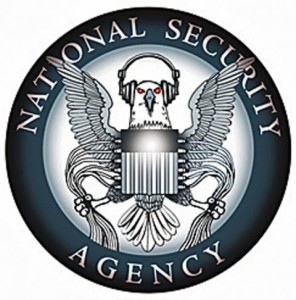Today’s breaking news is that Edward Snowden – a Booz Allen Hamilton contractor for the National Security Agency (NSA) who released internal NSA documents to The Guardian and The Washington Post – has fled to Latin America.
He’s been joined by Wikileaks employee Sarah Harrison. Missed in much of the hoopla surrounding Snowden’s “OJ Simpson in his White Bronco Take Two“: Booz Allen’s central role in Chicago’s “NATO 3” domestic terrorism case.
“NATO 3” is shorthand for Jared Chase (29), Brent Betterly (25) and Brian Church (21), three Occupy activists who drove up to Chicago in late-April of 2012 before the North Atlantic Treaty Organization (NATO) Summit. Weeks later, they saw themselves faced with several domestic terrorism charges and many more serious felony charges.
Currently sitting in Cook County Jail – the most heavily populated prison in the U.S. and cited in a 2008 report by the U.S. Department of Justice for inhumane conditions – they face 85 years behind bars.
It’s the first time Illinois’ state terrorism statute has ever been utilized, with an official trial starting date set for Sept. 16, 2013 at Cook County Courthouse. That’s one day before the two year anniversary of the launch of Occupy Wall Street.
The Booz Allen Connection
Two undercover Chicago Police Department officers going by the names Mo and Nadia were instrumental to the eventual arrest and charging of the “NATO 3.” They were on a temporary 90-day assignment before the NATO Summit beginning in Feb. 2012 as part of Field Intelligence Team 7150 to keep an eye 0n any “criminal activities” of anarchists or Occupy Chicago.
A stack of court records have come out during the pre-trial phase.
Some of those records show that members of the FBI’s Chicago Regional Computer Forensic Laboratory (RCFL) may be called to testify if the case goes to trial. A domain name search for Chicago RCFL’s web site shows that it was registered by Booz Allen.
Booz Allen Hamilton is referred to by its proponents as a “Digital Blackwater,” a reference to what Jeremy Scahill referred to as the “world’s most powerful mercenary army,” now going by the name “Academi.”
“[BAH] is one of the NSA’s most important and trusted contractors. It’s involved in virtually every aspect of intelligence and surveillance,” wrote investigative journalist Tim Shorrock in a recent article. “Among other secret projects, Booz was deeply involved in ‘Total Information Awareness,’ the controversial data-mining project run for the Bush administration.”
Booz’s Connection to the Pentagon’s Human Terrain System
As I wrote in my article on TruthOut, Booz Allen is also deeply involved in the Pentagon’s Human Terrain System and its Human Terrain Teams, which “map the human terrain” of communities abroad for the military and CIA as part of counterinsurgency warfare campaigns.
Booz Allen provides IT and logistical support for the HTS/HTTs.
A career New York cop, Chicago Police Department (CPD) superintendent Garry McCarthy is no stranger to the Human Terrain System.
It wasn’t long he after formally assumed the mantle of CPD superintendent in 2011 that McCarthy drew fire for having allowed a spy ring tasked to “map the human terrain” of Newark, N.J.,’s Islamic community to operate there, where he served as police chief before taking the position as CPD’s top dog.
McCarthy also served as an NYPD commander when the police set up spy rings before the 2004 Republican National Convention in New York City and during “CIA on the Hudson,” the joint NYPD/CIA project that was set up and run by former CIA Deputy Director for Operations David Cohen to “map the human terrain” of New York City’s Islamic community.
“Architecture of Oppression”
Snowden referred to the Frankenstein the NSA and its private contractors have created as an “architecture of oppression” in his exclusive interview with Glenn Greenwald and Laura Poitras in The Guardian.
“Digital Blackwater,” as AlterNet‘s Tom Hintze pointed out, is but a tiny piece of the “architecture of oppression.” The architecture also includes the use of undercover officers, agent provocateurs, and paramilitary-style policing of protests, to name a few.
Snowden’s comments to Greenwald speak well to the “NATO 3” case, which revolves predominantly on things they said to Mo and Nadia and things they said to one another on Facebook before heading to Chicago. It’s what Roger Shuy referred to as “language crimes.”
“[E]ven if you’re not doing anything wrong you’re being watched and recorded. You simply have to eventually fall under suspicion from somebody even by a wrong call,” Snowden told Greenwald. “And then they can use this system to go back in time and scrutinize every decision you’ve ever made, every friend you’ve ever discussed something with. And attack you on that basis to sort to derive suspicion from an innocent life and paint anyone in the context of a wrongdoer.”






